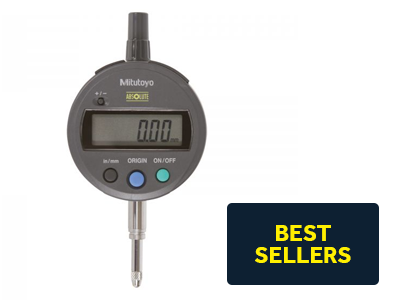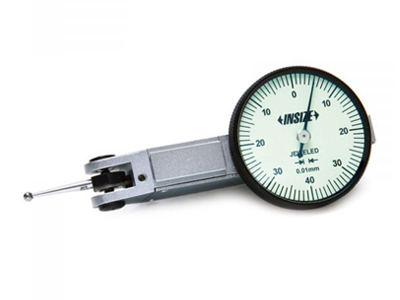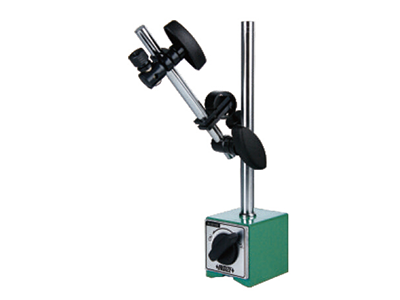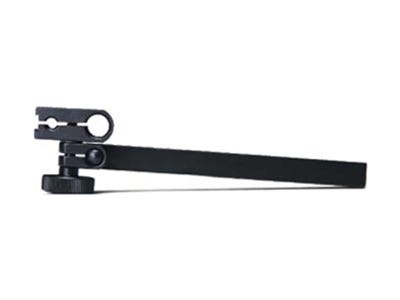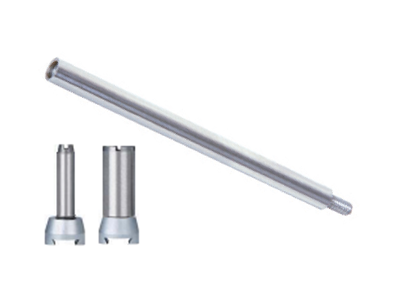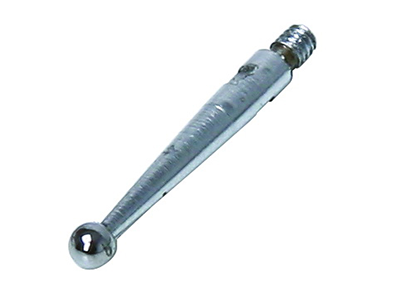INDICATORS
Precision dial & digital indicators from Insize, Mitutoyo & Mahr
Indicators
What are indicators and how do you use them?
An indicator is used to show run out, discrepancies or the position of an object; how precise a workpiece is within given tolerances. Indicators consist of a linear scale (either dial or digital readouts) connected to a stylus or plunger which will touch the workpiece to determine accuracy.
Indicators have many practical uses in engineering. They can be attached to a CNC or manual lathe, as well as milling machines, via an indicator stand or insertion directly into a machine using the machine spindle or tool holder. A real world application is determining the severity of concentricity when turning a workpiece on a manual lathe.
What different types of indicators are there?
When deciding which indicator is correct for an application, the first factor to consider is the readout. Dial indicators feature an analogue display with a pointer or hand displaying the current measurement. The hand is operated using a rack and pinion mechanism and easily shows visually whether there is run out or misalignment. Digital indicators operate using an LCD display and can display measurements to a much higher accuracy than dial indicators (up to 4 decimal places).
Dial test indicators differ from dial indicators in that they feature a stylus with a swinging or sweeping orientation. A simple way to remember the difference is that dial indicators plunge whereas dial test indicators swing. The lever-style contact point makes dial test indicators ideal for setting workpieces, indicating near runout, detecting straightness in workpiece clamping and more.
What features do indicators have?.
Different indicator models feature various characteristics. Accuracy, for instance, can vary greatly based on the model. On dial indicators, graduation indicates the increment by which the scale increases, which could be either 0.1mm or 0.01mm. Naturally, dial indicators with a 0.01mm graduation will be more accurate than one with 0.1mm. Digital indicators, by virtue of its numerical readout, provide more accurate measurements than dial indicators and eliminates any human error encountered by manually reading the scale. However, given the nature of electronic indicators, making sure the battery life is sufficient to provide accuracy is paramount.
Many components on indicators are interchangeable. For instance, the shape of the contact point can be changed depending on the surface being tested; including ball point, shell type point, knife edge point, flat point, needle point, blade point etc. Stylus size also varies, which will affect the range of measurements an indicator can take. Stylus can range from below 10mm up to 100mm and above.
The backing plate is also available in either lug back or flat back style. Lug back plates allow you to hold the indicator from behind, with flat back used where the indicator will be fastened using the stem. Depending on the backing plate, different stands are available in either standard or fine adjustment variants depending on the location and type of measurement being taken. Different bases can be applied; magnetic stand bases provide forces up to 100kgf, as well as vacuum stands up to 80kgf forces. Stands can also be attached to granite surface plates for perfect accuracy and zero setting.
What brands of indicator do we supply?
Cutwel supply dial indicators, digital indicators and dial test indicators from market leading measuring tool supplier Mitutoyo and Insize. Indicators from Insize are perfect for general workshop applications and feature a comprehensive range of sizes, styles and accessories. Mitutoyo indicators feature advanced functionality, premium build quality and high accuracy for inspection-grade measuring applications.
IP class protection in indicators
IP (Ingress Protection) is an internationally recognised standard of measuring the effectiveness and level of protection against dust, water, coolant, steam and other external sources of damage. An IP rating consists of 2 numbers: the first describes the level of protection against the intrusion of foreign bodies to components within the tool, whereas the second details the extent of protection against moisture.
Indicators are supplied in a variety of IP classes including:
IP42: Protection against solid objects over 1mm (e.g. wire) and protection against vertically falling water droplets for 10 minutes at a rate of 3mm/min.
IP55: Dust protected with only limited ingresses of dust permitted. Also protected against jets of water with limited ingress permitted.
IP66: Dust tight with no ingress of dust for 2 to 8 hours. Also protected against heavy seas of water projected in powerful jets, which will not enter the tool in harmful quantities.
Can you calibrate indicators?
In theory, it is possible to calibrate indicators. However, for most practical workshop uses calibration should not be required. Most indicators supplied by Cutwel are supplied with a manufacturer’s inspection certificate which contains tolerances and accuracy of your specific tool (please note: this is not equivalent to a UKAS calibration certificate).
If you would like to discuss calibrating your indicator, please get in touch with Cutwel today.
Don't have an account?
Creating an account has many benefits: check out faster, keep more than one address, track orders and more.
Or
Checkout as a Guest
Place your order without creating an account for extra convenience.

